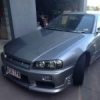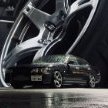Announcements
-
Similar Content
-
Latest Posts
-
By Dose Pipe Sutututu · Posted
Forgot to add, that excellent economy was on street tyres, normal street alignment, I recall they were Kumho KU31. Current motor, with the silly alignment and tyres would go nowhere near those numbers. -
And also, as small as the effect may be, the larger exhaust side places a lower restriction on the exhaust flow, even when off boost. When my bigger turbo went on you could hear the difference in the exhaust note at cruise (almost everywhere actually) and fuel consumption went down a little bit.
-
By Dose Pipe Sutututu · Posted
I got better economy after fitting a bigger turbo (when purely highway driving, Sydney to Forster, got down to ~8.3L/100KM), as it takes more throttle and RPM to get on boost. -
Oops. Sorry mate. It is both excellent to hear and also surprising though. The amount of work required to (effectively manually, not on a production line) build a core vs your low retail price point is why I presumed that you were buying cores. But let's also be clear about what is meant by "build". At your price point I can't see you making cores from billet on a mill, even if CNC, or doing all the machine work on a rough casting. Surely the lumps of metal are sourced more or less ready to go from an Asian supplier, right? Maybe the same with shafts. I mean, you could turn shafts up yourself, but it's pretty slow going for items that are all essentially bulk order producable. I was always perfectly willing to believe that you assemble your wheels to shafts, fit up bearings and do all the balancing. I actually expected that you would have been doing all that even if the core did arrive from a supplier with most of that pre-assembled. Nevertheless, please accept my apology.
-
I hate to interrupt, there are enough internet rumors. I do build every single CORE in house that leaves my workshop including the one that you are using, as well as engineering work done on your turbo housings. Reason been is I got shafted badly by a turbo joint 18 years ago when the business first started. I since trusted no one when comes to selling anything under my name, or I just don't touch them at all.
-








Recommended Posts
Create an account or sign in to comment
You need to be a member in order to leave a comment
Create an account
Sign up for a new account in our community. It's easy!
Register a new accountSign in
Already have an account? Sign in here.
Sign In Now